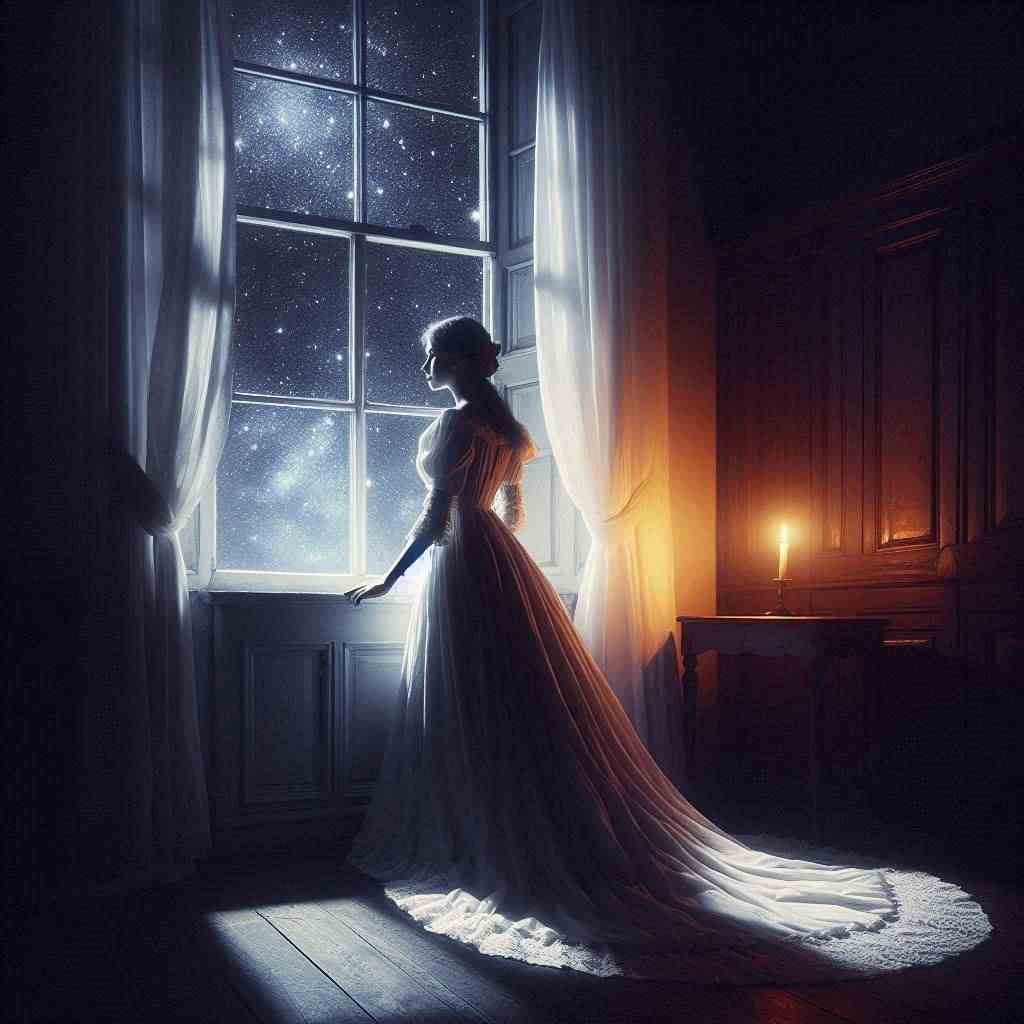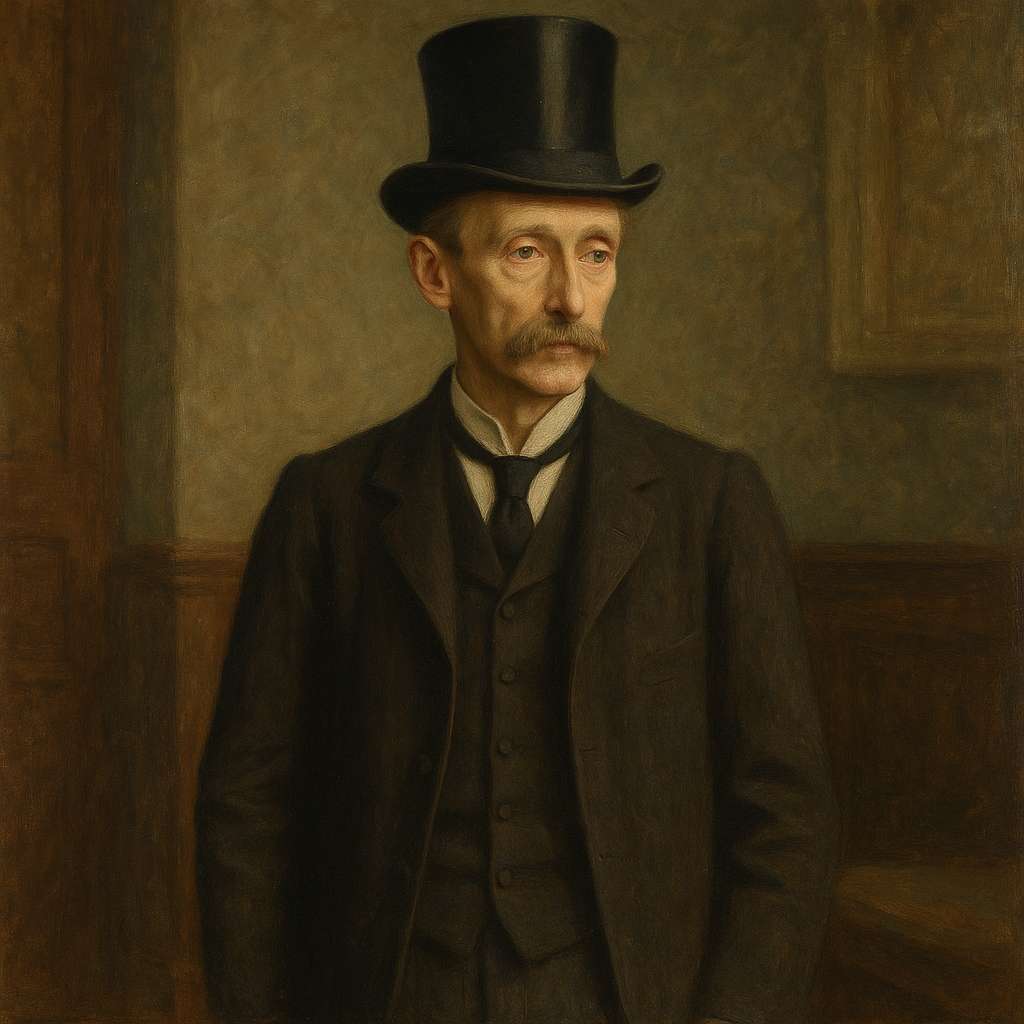The Night Has A Thousand Eyes
Francis William Bourdillon
1852 to 1921

Want to track your favorites? Reopen or create a unique username. No personal details are required!
The night has a thousand eyes,
And the day but one;
Yet the light of the bright world dies
With the dying sun.
The mind has a thousand eyes,
And the heart but one:
Yet the light of a whole life dies
When love is done.
Francis William Bourdillon's The Night Has A Thousand Eyes
Introduction
Francis William Bourdillon's poem "The Night Has A Thousand Eyes" is a masterful exploration of the interplay between perception, emotion, and the human experience. This brief yet profound work, consisting of just eight lines, manages to encapsulate complex philosophical ideas about the nature of reality, consciousness, and love. Through its elegant structure and evocative imagery, Bourdillon's poem invites readers to contemplate the relationship between the external world and our inner lives, as well as the transformative power of love.
Structure and Form
The poem is composed of two quatrains, each following an ABAB rhyme scheme. This symmetrical structure serves to reinforce the parallel drawn between the natural world and the human psyche. The alternating long and short lines create a rhythmic cadence that mimics the ebb and flow of day and night, as well as the pulsing of human emotion.
The repetition of key phrases in the first and second stanzas ("has a thousand eyes" and "but one") establishes a clear connection between the two, inviting the reader to consider the similarities and differences between the external and internal realms. This parallelism is further emphasized by the similar syntactical structure of the two stanzas, with each beginning and ending with nearly identical phrases.
Imagery and Symbolism
Bourdillon's use of imagery is particularly striking in its simplicity and effectiveness. The juxtaposition of night and day in the first stanza serves as a powerful metaphor for the complexity of human perception. The "thousand eyes" of the night can be interpreted as the stars, which provide a multitude of points of light in the darkness. In contrast, the "one" eye of the day is clearly the sun, whose singular brilliance outshines all other celestial bodies.
This astronomical imagery is then deftly transposed onto the human experience in the second stanza. The "thousand eyes" of the mind evoke the vast array of thoughts, memories, and perceptions that constitute our mental landscape. The "one" eye of the heart, in turn, represents the focused intensity of love and emotion.
The use of light as a central motif throughout the poem is particularly significant. Light serves as a symbol for life, consciousness, and understanding. The dying of the light in both stanzas suggests not just the end of a day or a love, but a fundamental shift in one's entire way of being and perceiving the world.
Philosophical Implications
At its core, "The Night Has A Thousand Eyes" grapples with profound philosophical questions about the nature of reality and human experience. The first stanza can be read as a meditation on the relationship between the one and the many, a concept that has fascinated philosophers since ancient times. The multitude of stars in the night sky represents the diversity and complexity of the universe, while the singular sun stands for unity and coherence.
The poem also touches on the philosophical problem of perception. The contrast between night and day suggests that our understanding of the world is shaped by our perspective and the conditions under which we observe it. This idea resonates with both ancient skeptical traditions and modern phenomenology, which emphasize the subjective nature of human experience.
In the second stanza, Bourdillon shifts this philosophical inquiry to the realm of human psychology and emotion. The comparison between the mind and the heart can be seen as an exploration of the tension between reason and emotion, a theme that has been central to philosophical and literary discourse for centuries.
The Power of Love
Perhaps the most striking aspect of the poem is its assertion of the transformative power of love. By drawing a parallel between the sun's effect on the world and love's impact on a person's life, Bourdillon suggests that love has the capacity to fundamentally alter our entire mode of being.
The phrase "the light of a whole life dies / When love is done" is particularly poignant. It implies that love is not merely one aspect of life among many, but rather the central organizing principle that gives meaning and coherence to all our experiences. The loss of love, then, is equated with a kind of existential darkness, a fundamental shift in how we perceive and interact with the world.
This view of love as a transcendent force that shapes our entire reality has resonances with both Romantic poetry and existentialist philosophy. It suggests that our emotional connections are not simply subjective experiences, but rather the very foundation of our being-in-the-world.
Universality and Personal Experience
One of the strengths of Bourdillon's poem is its ability to speak to universal human experiences while also inviting personal reflection. The astronomical imagery of the first stanza evokes a sense of cosmic scale, reminding us of our place in the vast universe. At the same time, the intimate emotional landscape of the second stanza brings us back to the immediacy of individual human experience.
This interplay between the universal and the personal encourages readers to consider their own experiences of love and loss in a broader context. It suggests that our most private emotional experiences are connected to larger patterns and rhythms in the natural world and human existence.
Language and Sound
The musicality of Bourdillon's language is crucial to the poem's effect. The repetition of key phrases creates a hypnotic quality, drawing the reader into the poem's meditative atmosphere. The assonance in phrases like "light of the bright world dies" and "light of a whole life dies" creates a sonic link between the two stanzas, reinforcing their thematic connection.
The simplicity of the language belies the complexity of the ideas being expressed. Bourdillon's use of common words and straightforward syntax makes the poem accessible, while the depth of meaning invites multiple readings and interpretations.
Conclusion
"The Night Has A Thousand Eyes" is a remarkable achievement in miniature. In just eight lines, Francis William Bourdillon has crafted a poem that resonates on multiple levels - emotional, philosophical, and aesthetic. Through its elegant structure, evocative imagery, and profound insights into the human condition, the poem invites us to contemplate the nature of perception, the power of love, and the interconnectedness of all things.
The enduring appeal of this poem lies in its ability to speak to fundamental human experiences and questions. It reminds us of the vastness of the universe and the intensity of our inner lives, the multiplicity of our perceptions and the singularity of our deepest emotions. In doing so, it offers both comfort and challenge - acknowledging the pain of loss while affirming the transformative power of love.
Ultimately, "The Night Has A Thousand Eyes" stands as a testament to the capacity of poetry to distill complex ideas and emotions into a form that is at once accessible and profound. It is a work that rewards repeated reading and reflection, offering new insights and resonances with each encounter. In its brevity and depth, it exemplifies the power of lyric poetry to illuminate the human experience and connect us to the larger rhythms of the natural world and the cosmos.
This text was generated by AI and is for reference only. Learn more
Want to join the discussion? Reopen or create a unique username to comment. No personal details required!



Comments
No comments yet. Be the first to comment!